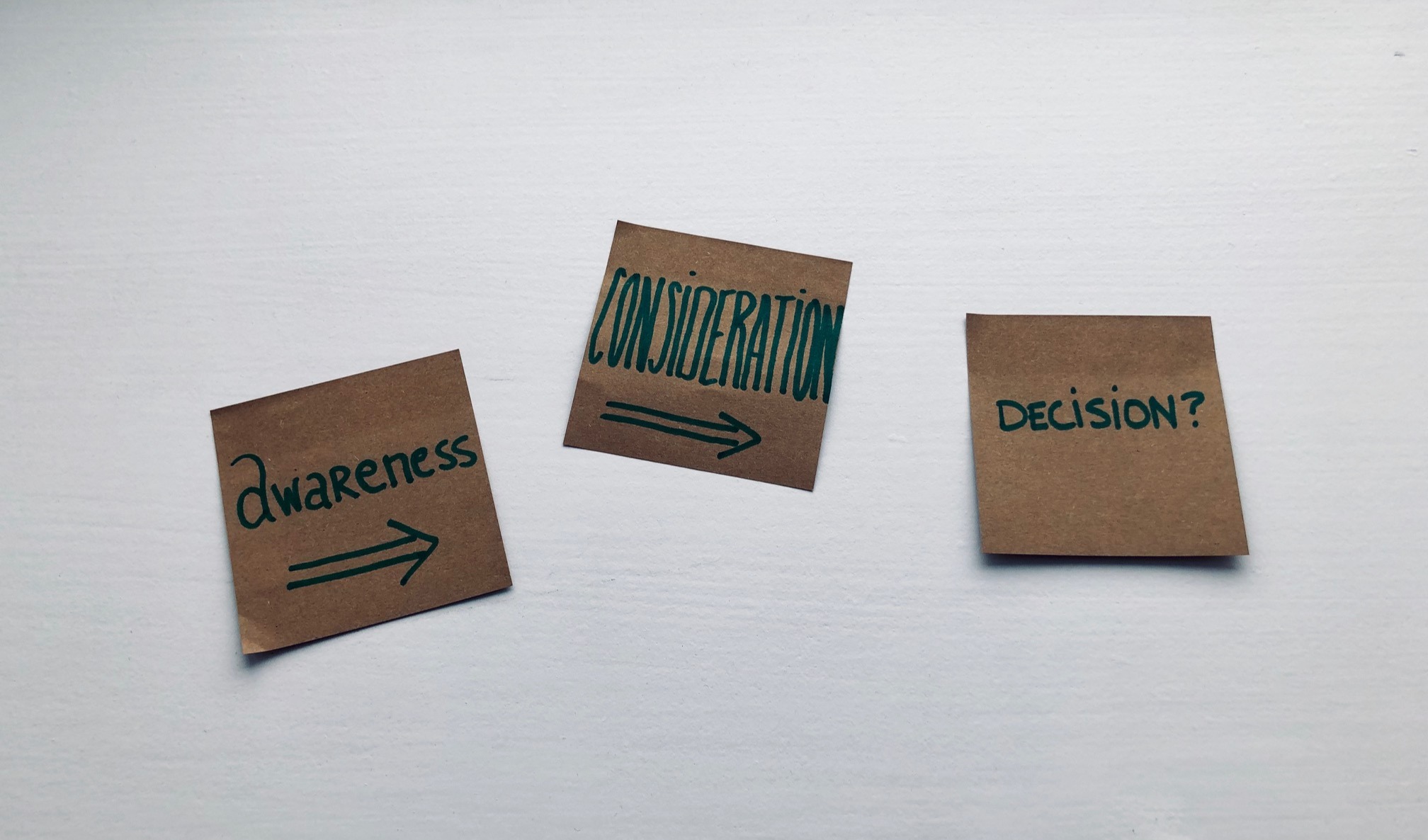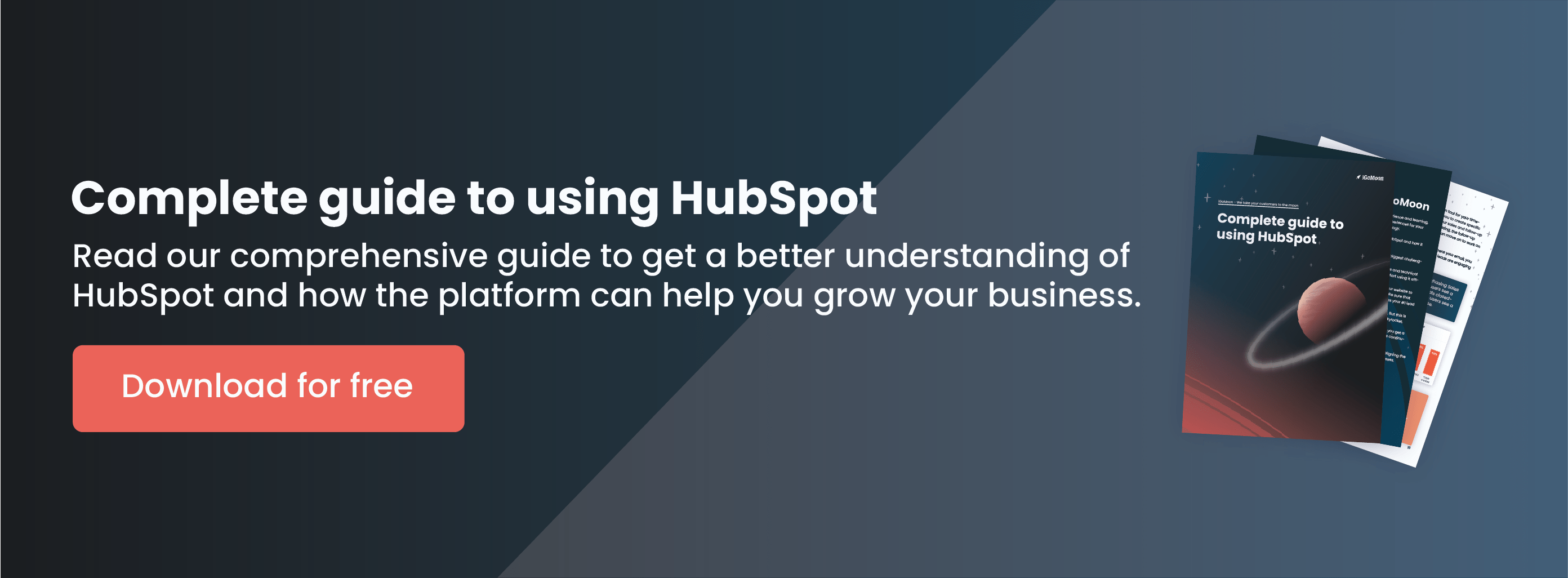All your customers that have entered an agreement with you have in one way or another gone through a buyer's journey. All the way from the awareness stage to the decision stage, by passing the consideration stage along the way. At some point your customer has realised they have a problem, found a potential solution and chosen you as the supplier. What does the journey look like? And how can you help customers move further in their buyer's journey?

*This post was originally written by Fia Jonsson and published on 15 March 2019
What Is a Buyer's Journey?
A buyer's journey is a framework that recognises a buyer's progression through a research and consideration phase, that ultimately leads to a purchase. You need to provide your leads with relevant content at all stages, as well as blog articles as supporting content to all your premium content (PDFs, white papers, guides, etc.)
Time spent during the process of moving from awareness to decision may vary a lot depending on the organization and industry. First, and foremost, it depends on your business model (B2B/B2C) but also the product/service you provide as well as the customer.
The most important thing is not to concentrate too much on why things don't fall into place the way you were thinking it should, but rather on what could have influenced the fall out. Trends? Changes to relevant regulations that drives the sales process to shorten? Other times, the reason could be time consuming procurements or other complex reasons that may cause the sales process to be extended.
Why is it important?
Traditional marketing is often more focused on actually making the sale, rather than providing the potential customer with the right and valuable information. By understanding the buyer's journey and implementing the framework in the marketing process, it becomes easier for you to move from the "What" you offer, and focus on the "How" it helps the customer and "Why".
In addition to this, it also helps you becoming better in creating tailored content which makes it easier to optimize the content with relevant keywords, since you know who you're targeting. By following the framework and identifying the three stages of the journey, you have the chance to make the customers trust you before making the sale.
The 3 Phases of The Buyer's Journey
The buyer's journey has three stages: awareness, consideration and decision. As mentioned, you should provide helpful content for each of the stages to help the customers move forward in their buyer's journey. Below we have explained the different stages of the journey and listed some examples of content to use depending on the stage.
Awareness
During the first stage of the buyer's journey - an issue or problem is discovered. The visitor will be using "symptoms" of the problem as their search phrase, as they're not yet looking for a solution. This is one of many reasons why blogs and content related to the symptoms are a good way to get the visitors engaged with the content.
Suggested content:
- Blogs articles: Blog articles are the most common type of content in the awareness stage - for good a reason. Blogs tend to provide informative content and aren't experienced as pushy. When optimized, the content can also be easily found, through a simple Google search.
- Video: Videos attract attention and makes your visitors stop and look. Short-form videos are the most used media format for marketers and short-form videos have the highest ROI on social channels.
- Premium content: Provide your visitors with more in-depth content such as white papers, checklists, infographics and shorter guides already at an early stage to build reliability.
- Social media: SoMe is your company's chance to prove yourself as thought-leaders and fun people. You know which position you like to take, and what fits with your brand. The most effective content on social media has proven to be gunny content, so whenever you get a chance, make it FUN for your readers to engage with your content.
Related article: 5 Questions to ask in order to develop reliable buyer personas
Consideration
It's time to start presenting the way to solve your visitors problem. We are still not talking about the solutions that you as a supplier can provide, but how to overcome it.
Content is key, and it's time to turn your visitors into leads. Blogs and premium content, equally. It is time to get to know your visitors - what they like, which keywords they're using, how they found you and most importantly, who they are. The easiest way to do this, is to provide downloadable content where they need to fill in some details on a form which makes them convert into a lead.
Suggested content:
- Blog, blog, and blog a little more! Start thinking about how you can introduce your solution to the problem for the visitors and leads, which topics are interesting for them to read about, and conduct a thorough keyword analysis before you start writing.
- Webinars, seminars & small events: Different types of events can be successful concepts during the consideration stage, since it will engage the participants and have them interact with each other. Invite customers as well, and have them engage with leads.
- White papers/guides written by experts - comparing solutions: These pieces of premium/downloadable content should provide value to the reader by being focused on how to solve the problem they're facing. However, it's still not time to discuss potential service providers.
- Video: Recordings from webinars/seminars/events or videos presenting solutions to a specific problem. Just as in the awareness stage, there are different types. Be creative!
Decision
It's finally time for the visitor to make a decision. In addition, it's time for you as a supplier to step up your game and win the fight! When your lead reaches the decision stage, they decide which solution to their problem suits them best, and the hunt for the best fit supplier begins.
What makes your product or service stand out? Price? Quality? Support? Warranty? Find your best arguments, and communicate it!
Suggested content:
- Free demo: Are you a SaaS-company, or do you provide any other type of service? A live demo or a free trial will interest leads if it is a good fit. Trust your product or service to meet the high expectations of your leads.
- Customer stories: Your ambassadors (happy customers) are your best marketers. Word of mouth is everything. Having one of your customers taking the time to stand in front of the camera, or in writing to tell the world about how great your offer is and how much it has helped their business is priceless and the best social proof.
- Supplier comparisons. What makes you the best at what you do? Compare yourself to other suppliers. Dare to take your space, and tell the world why you are the greatest choice.
When in the decision stage, it also means you can make your forms longer, ask for more information than just an email address and a name. You are providing them with value, and their currency is personal information which you can use.
Related article: Not seeing the marketing results you were looking for? You're not alone
Are you ready to start working efficiently with the buyer's journey of your customers and looking for the right technology and tools to do so? We use HubSpot technology to help our customers create the most outstanding experiences for their customers.
Interested in learning more about HubSpot and how the platform can help you create the best experiences for your customers? Download our free "Complete guide to using HubSpot".
